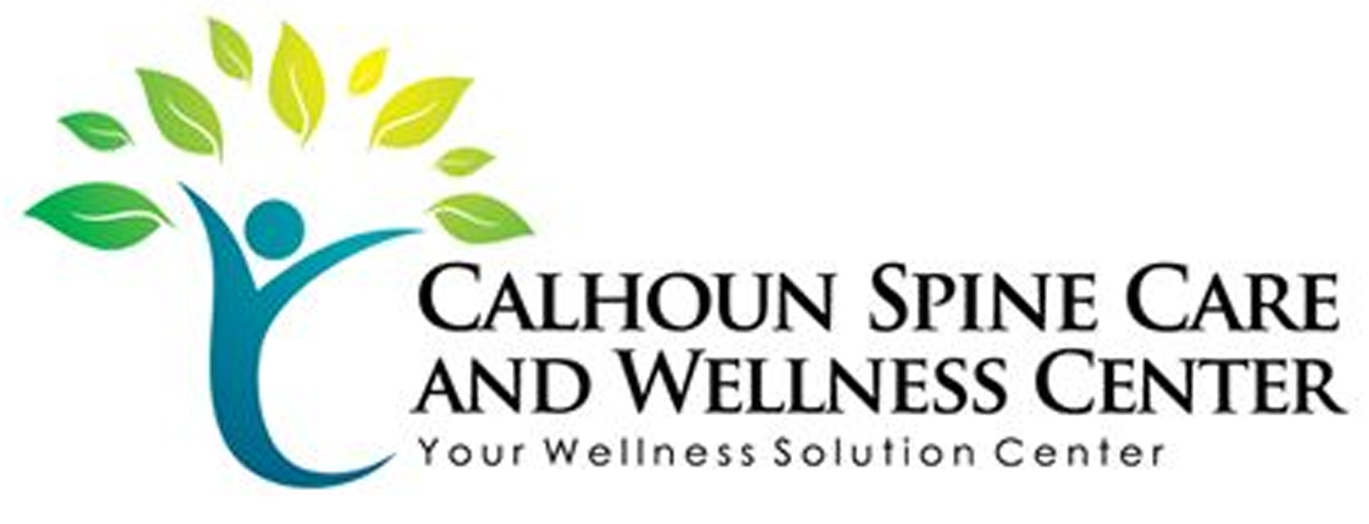If you're struggling with back pain, you might wonder how chiropractic treatment can help. This approach focuses on restoring spinal alignment through targeted techniques that not only relieve discomfort but also address its root causes. You'll find that methods like spinal manipulation and soft tissue therapy can greatly enhance your mobility and overall well-being. But what specific benefits can you expect from regular chiropractic care, and how does it actually work? Let's explore these key aspects that could change your approach to managing back pain.
Understanding Back Pain
Back pain is a common issue that many people face at some point in their lives. It can range from a dull ache to sharp, debilitating pain, and understanding its causes is essential for effective management. You might experience back pain due to various reasons, including muscle strain, ligament sprains, or even herniated discs. Poor posture, especially when sitting for long hours, can contribute greatly to discomfort.
Think about the activities you do daily. Lifting heavy objects without proper technique or overexerting yourself during workouts can lead to injury. Additionally, stress and tension can manifest physically, tightening your muscles and exacerbating pain. Identifying these triggers is the first step in alleviating your discomfort.
You should also consider the role of your lifestyle. Sedentary habits can weaken your core muscles, making your back more susceptible to strain. On the other hand, engaging in regular physical activity, such as stretching, strengthening exercises, and even yoga, can bolster your back health.
It's essential to pay attention to your body's signals. If you notice persistent pain, don't ignore it. Early intervention can prevent more severe issues down the line. Keeping track of how your back feels during different activities can provide valuable insights.
Understanding the various factors that contribute to back pain empowers you to take control of your health and seek appropriate treatment options when necessary.
The Role of Chiropractic Care
Chiropractic care plays an essential role in achieving proper spinal alignment, which can greatly reduce back pain.
You'll discover how holistic pain management strategies can address not just the symptoms, but also the underlying causes of discomfort.
This approach may empower you to regain control over your health and well-being.
Spinal Alignment Benefits
When your spine is properly aligned, it can greatly enhance your overall well-being. Proper spinal alignment supports your body's natural structure, allowing it to function more efficiently.
Here are some key benefits you can experience:
- Reduced Pain: Aligned vertebrae relieve pressure on nerves, decreasing discomfort and tension in your back.
- Improved Mobility: A well-aligned spine allows for better range of motion, making everyday activities easier and more enjoyable.
- Enhanced Posture: Chiropractic care can correct imbalances, promoting a healthier posture that minimizes strain on your muscles and joints.
Holistic Pain Management Strategies
Integrating holistic pain management strategies can greatly enhance your recovery from back pain. Chiropractic care plays a crucial role in this approach by addressing not just the symptoms, but the underlying causes of your discomfort. By focusing on spinal alignment, chiropractors help restore your body's natural function, promoting overall well-being.
In addition to spinal adjustments, consider incorporating lifestyle changes such as regular exercise, a balanced diet, and stress management techniques. Exercise strengthens your back and core muscles, providing better support for your spine. A nutritious diet can reduce inflammation, while mindfulness practices like yoga or meditation can help manage stress, which often exacerbates pain.
Moreover, chiropractic care often includes recommendations for ergonomic adjustments in your daily life. Whether it's setting up your workspace properly or learning proper lifting techniques, these small changes can make a big difference in your comfort levels.
Finally, think about combining chiropractic treatment with other therapies, such as massage or acupuncture. This multi-faceted approach can provide an all-encompassing solution for your back pain, helping you achieve lasting relief and improved quality of life.
Embrace these holistic strategies for a more effective recovery journey.
Techniques Used in Chiropractic Treatment
In chiropractic treatment, you'll encounter various techniques designed to alleviate back pain.
Spinal manipulation, soft tissue therapy, and targeted exercises all play essential roles in your recovery process.
Understanding these methods can help you make informed decisions about your treatment plan.
Spinal Manipulation Techniques
Chiropractors employ a variety of spinal manipulation techniques to alleviate back pain and restore proper alignment. These techniques target misalignments in the spine, which can lead to discomfort and restricted mobility.
By using specific adjustments, a chiropractor helps your body regain its natural function and encourages the healing process.
Here are a few common spinal manipulation techniques you might encounter:
- Diversified Technique: A hands-on method involving quick thrusts to restore spinal alignment.
- Gonstead Technique: This approach focuses on detailed analysis and specific adjustments based on X-ray findings.
- Activator Method: Utilizing a small handheld device, this technique delivers gentle impulses to the spine, promoting alignment without forceful adjustments.
These spinal manipulation techniques not only aim to relieve immediate pain but also enhance your overall well-being.
By restoring proper alignment, you may experience improved range of motion, reduced muscle tension, and a greater sense of energy.
As you work with your chiropractor, they'll tailor these techniques to your unique needs, ensuring you receive the most effective treatment possible for your back pain.
Soft Tissue Therapy
Soft tissue therapy plays an essential role in chiropractic treatment for back pain, addressing the muscles and connective tissues that often contribute to discomfort. When you experience back pain, it's usually not just about the spine; surrounding muscles may be tight or strained, causing further issues. Chiropractors use various techniques to relieve this tension and restore function.
One common method is trigger point therapy, where the chiropractor applies pressure to specific points in the muscle to alleviate tightness and pain. This technique helps release knots and improves blood circulation, promoting healing.
Another approach is myofascial release, focusing on the fascia—the connective tissue surrounding your muscles. By stretching and manipulating this tissue, chiropractors can enhance flexibility and reduce pain.
Incorporating soft tissue therapy into your treatment plan can greatly improve your overall recovery. You'll likely find that these therapies not only alleviate immediate discomfort but also enhance your mobility and prevent future issues.
Exercise and Rehabilitation
How can exercise and rehabilitation enhance your recovery from back pain? The right exercises can strengthen your muscles, improve flexibility, and foster better posture, all essential for alleviating discomfort. Chiropractic treatment often incorporates tailored exercise regimens to help you regain strength and mobility.
Here's how exercise and rehabilitation can support your healing process:
- Strengthening: Targeted exercises build muscle around your spine, providing better support and reducing strain.
- Flexibility: Stretching routines improve your range of motion, helping to ease tension in your back.
- Posture: Exercises that focus on alignment can correct habits that contribute to back pain.
Your chiropractor will design a program that fits your specific needs, ensuring you're performing the exercises correctly to maximize benefits.
By committing to these rehabilitation techniques, you'll likely notice improvements in your pain levels and overall physical function. Remember, consistency is key!
Integrating exercise into your recovery plan not only helps you heal faster but also empowers you to prevent future injuries. Embrace this proactive approach, and you'll be well on your way to a stronger, pain-free back.
Benefits of Chiropractic Adjustments
Chiropractic adjustments offer numerous benefits that can considerably enhance your overall well-being. When you receive these adjustments, you often experience immediate relief from pain, especially in your back and neck. By realigning your spine, chiropractors help alleviate pressure on your nerves, improving your body's ability to function efficiently.
You'll also notice increased mobility and flexibility after your adjustments. This newfound range of motion can make daily activities easier, whether you're bending down to pick something up or reaching for items on a high shelf. With regular chiropractic care, you might find it easier to engage in physical activities you love, like running or playing sports.
Another key benefit is stress reduction. Misalignments in your spine can contribute to tension and discomfort, which can lead to stress buildup. Chiropractic adjustments help relieve this tension, allowing you to relax and enjoy life more fully. Many patients report improved sleep quality, which can further enhance your overall health.
Chiropractic care also promotes better posture. As your spine aligns, you're likely to sit and stand straighter, reducing the risk of future injuries. This improvement can be particularly beneficial if you work at a desk or have a lifestyle that encourages poor posture.
Finally, regular chiropractic adjustments can boost your immune system. By improving your nervous system function, your body becomes more efficient at fighting off illness.
Evidence Supporting Chiropractic Treatment
Numerous studies have demonstrated the effectiveness of chiropractic treatment for back pain, providing a solid foundation for its use in pain management. Research consistently shows that chiropractic care not only alleviates pain but also improves function.
If you're considering this form of treatment, you'll find it backed by substantial evidence, including:
- Increased mobility: Patients often report enhanced flexibility and movement after chiropractic adjustments.
- Reduction in pain intensity: Many studies highlight a significant decrease in pain levels following regular chiropractic sessions.
- Improved quality of life: Chiropractic treatment can lead to better overall well-being, allowing you to engage in daily activities without discomfort.
A systematic review published in the Journal of Chiropractic Medicine found that spinal manipulation can be as effective as traditional medical treatments for acute and chronic back pain.
Another study in the Journal of Pain highlighted that patients receiving chiropractic care reported less pain and improved function compared to those who received standard medical care alone.
Moreover, guidelines from reputable organizations, such as the American College of Physicians, recommend chiropractic as a first-line treatment option for low back pain.
This growing body of research and endorsement from health professionals solidifies chiropractic treatment as a valid choice for those seeking relief from back pain.
What to Expect During a Visit
When you visit a chiropractor for back pain, you can expect a detailed evaluation to understand your specific condition. The chiropractor will start by asking about your medical history, including any previous injuries or surgeries, and your current symptoms. This helps them identify potential underlying issues.
You'll also be asked about your lifestyle, such as your work routine and physical activities, as these can impact your back health.
Next, the chiropractor will perform a physical examination. They'll assess your posture, range of motion, and any areas of tenderness. You might undergo specific tests to evaluate muscle strength and reflexes. This all-encompassing approach guarantees they gather all necessary information before deciding on a treatment plan.
Once the evaluation is complete, the chiropractor will explain their findings and discuss potential treatment options tailored to your needs. You might receive chiropractic adjustments, which involve gentle manipulation of your spine to improve alignment and relieve pain.
They may also recommend exercises, stretches, or lifestyle changes to support your recovery.
During your visit, it's important to communicate openly about your comfort level and any concerns. The chiropractor will guide you through the process, making sure you feel at ease.
As your sessions progress, you can expect to see improvements in your back pain and overall function, making each visit a step toward better health.
Conclusion
Ultimately, chiropractic treatment offers a powerful approach to easing back pain by promoting spinal alignment and addressing underlying issues. By utilizing various techniques, you can experience immediate relief and improved function. Regular visits not only help alleviate discomfort but also strengthen supporting muscles and enhance your overall well-being. So, if you're struggling with back pain, consider chiropractic care as a proactive solution to reclaim your comfort and prevent future injuries. Your back deserves it!



